Adams Adeosun reflects on Karim Achalhi’s photographs of ballerina Aya Sendby at various locations in Casablanca, showing us the city through dance.
Usually, to photograph is to suspend movement, to freeze a subject in time, to hold a moment in a hand so that it does not flutter away like a passel of pigeons rudely interrupted in a plaza. But for Karim Achalhi, a photographer in Casablanca, on the North African coast of the Atlantic in Morocco, movement is material, the motif of his project, Casarina, Part 1, featuring ten sublime photographs of the ballerina, Aya Sendby.
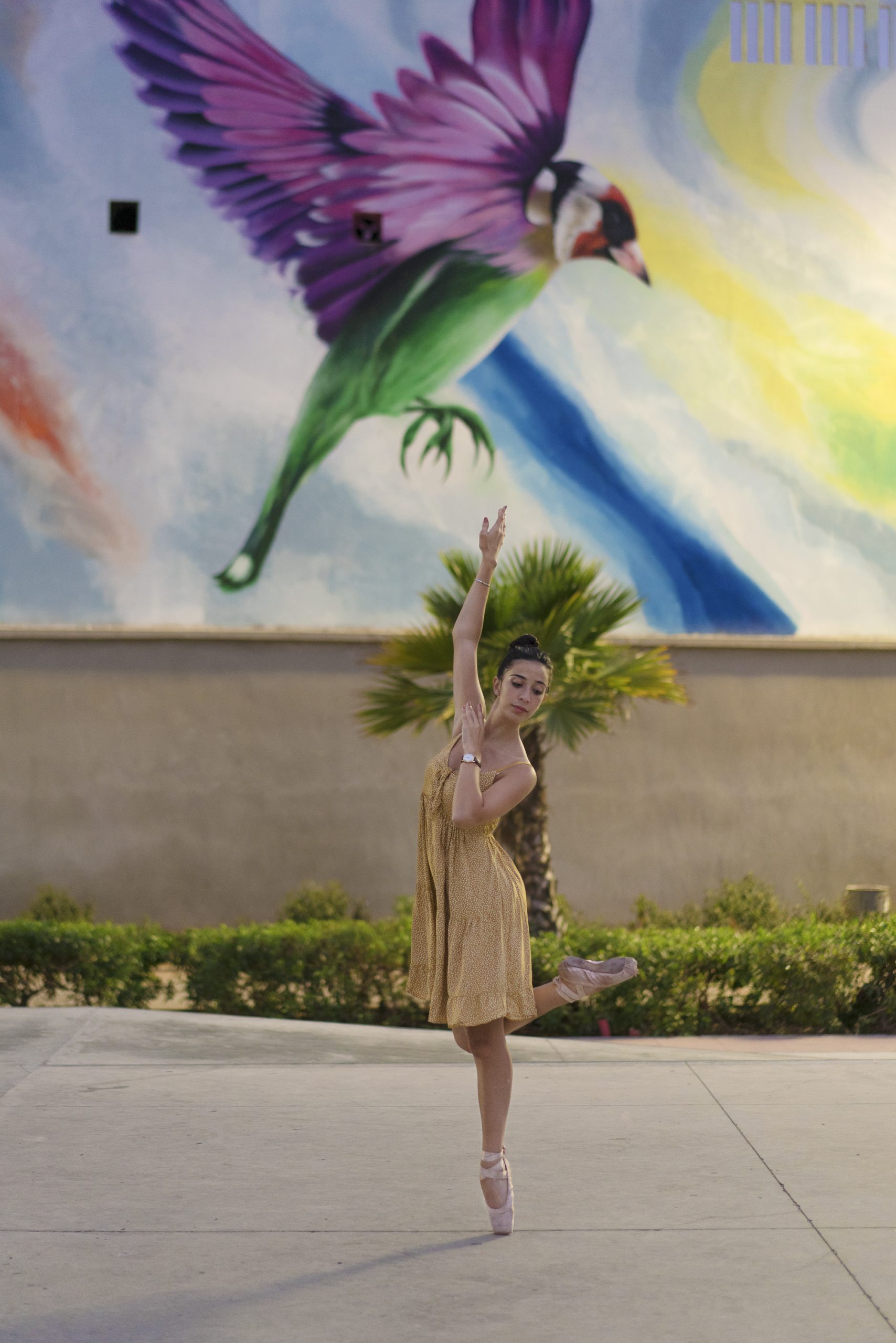
Already, Casablanca is a cultural phenomenon, being the eponymous subject of a 1942 Hollywood classic that wasn’t even filmed in the city. It features prominently in Nigerian writer Emmanuel Iduma’s travelogue A Stranger’s Pose and is a dream destination for bleary-eyed romantics the world over. But Achalhi, in a less romantic time, with travels and dreams suspended by a global pandemic, takes yet another intimate look at the city, peering at the modern iterations of its style around the delicate figures of dance. Casarina: Casablanca, ballerina, movement.
In Casarina, Part 1, Achalhi acknowledges Casablanca’s list of imperialist influences: the Moorish architecture of Western Europe, Art Deco of the French, and Postmodernist architecture of the United States. In the foreground is Sendby making paradoxically delicate and strong moves, her bold dresses courting contrasts or blending into the monochrome, her body sectioning the photographer’s images into Cartesian planes, touching both the sky and the ground sofly, somewhere between flight and drift. She is beautiful and so is ballet.
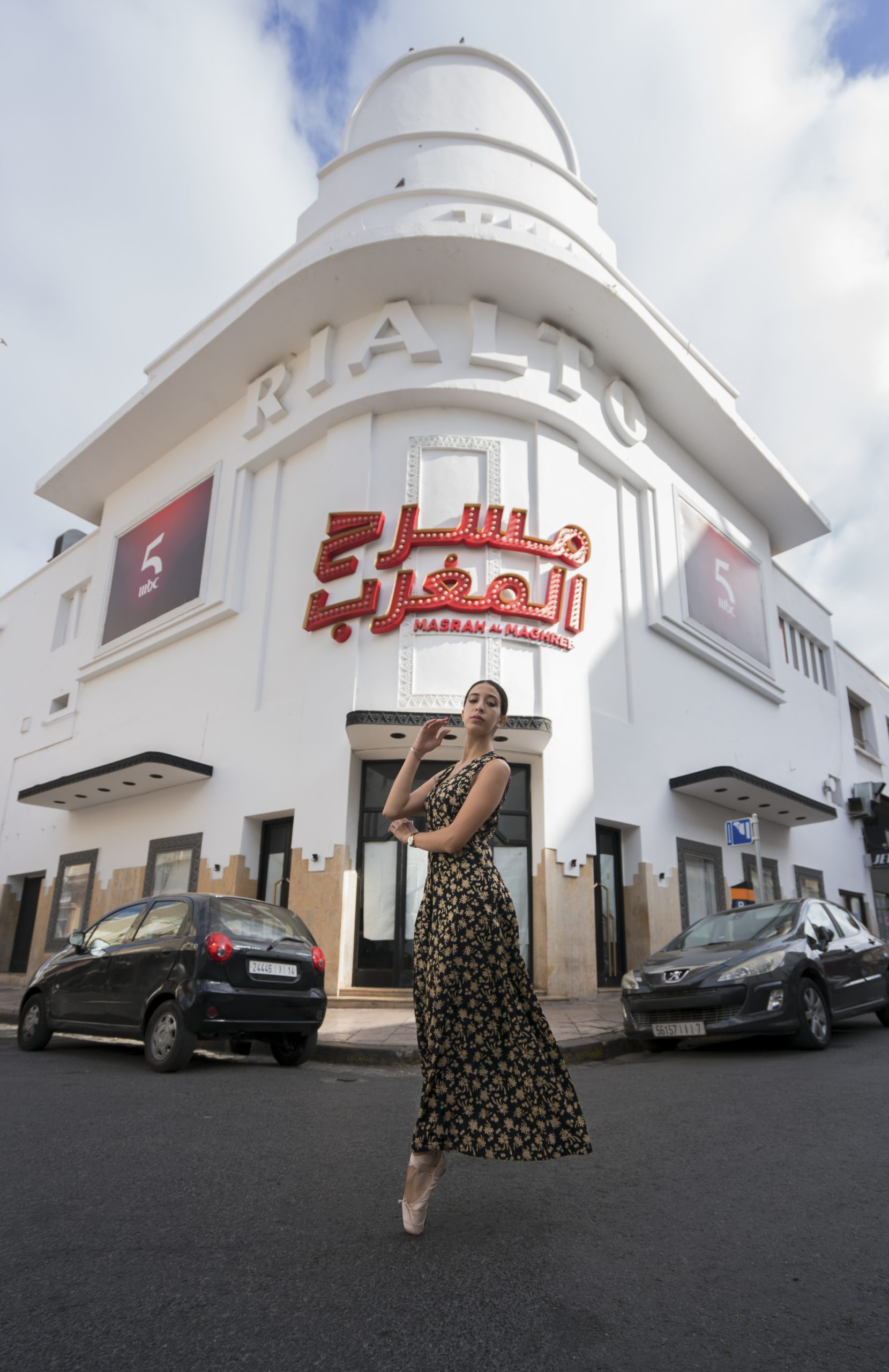
By photographing a ballerina at work in the streets, Achalhi continues the conversation of universalizing art. He has taken a more leisurely European Court art and layered it on the city’s landscape. He is saying: In Casablanca, it is not all port business and grand minarets and touristy camel rides in hot deserts. There are warm bodies too. There is dance. There is ballet.
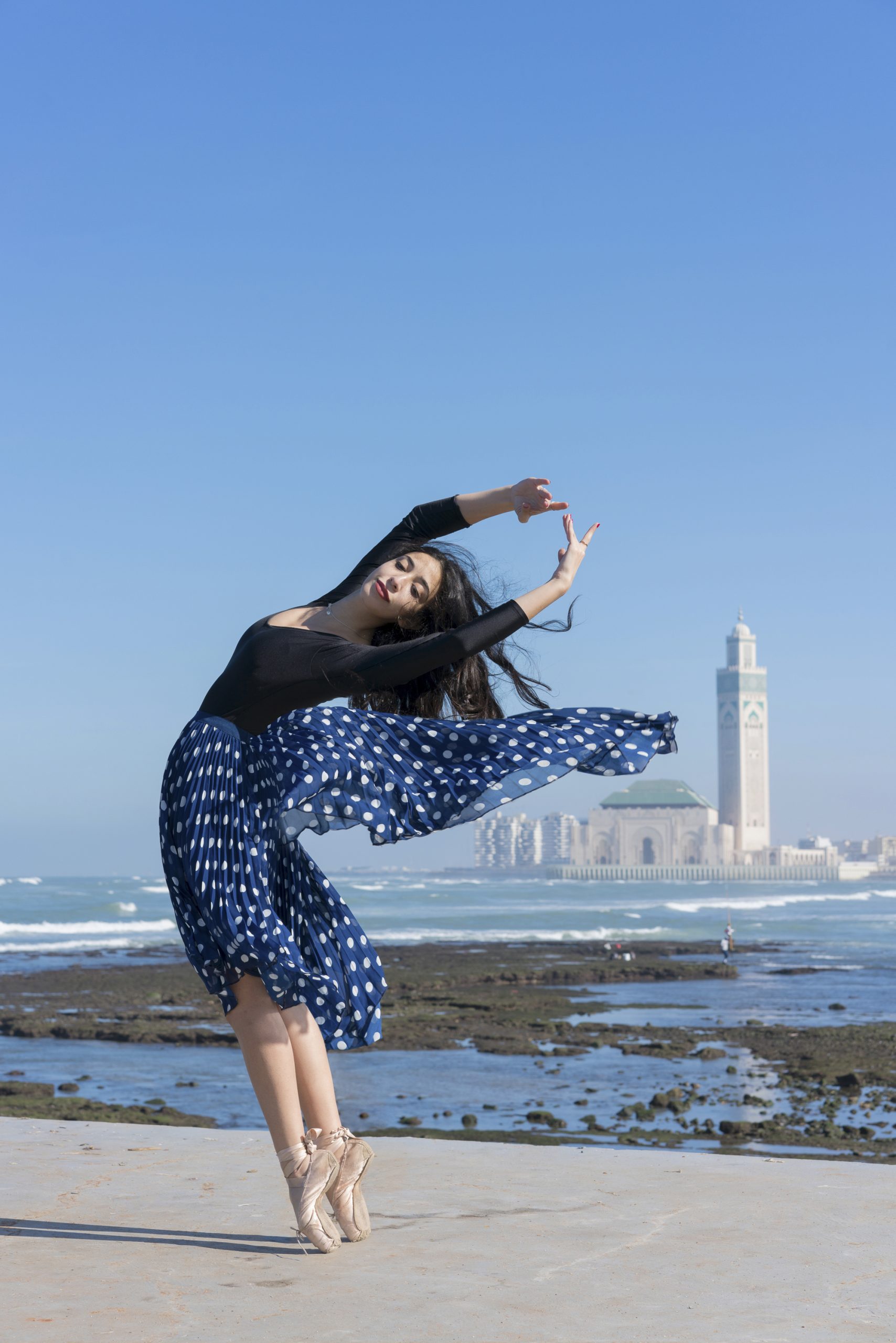
Two pictures capture the artistic principles of Casarina, Part 1. In the composition of one of them, the ballerina is standing on her toes, her blue polka-dotted dress billowing in the wind. She is twisting to face the camera, her whole body stretched out, her form curving like a protective crescent over the Hassan II Mosque which is in the far distance. The mosque is impressive—it is one of the largest in the world and the height of its minaret is staggering—but in this frame, it is the outlier. It is rigid and interrupts the fluidity of Alchali’s photograph. Sendby, dancing before it, is more elegant. She blends into the world around her: her pointe shoes barely in contact with the ground yet rooted to it, the blue dress floating in the azure of the vast sky and the reflection of it in the water behind her. Looking at the kinesis of the moment in which the camera freezes her, one begins to imagine the series of movements that follow. But the composure of this image belies the complexity engendering it.
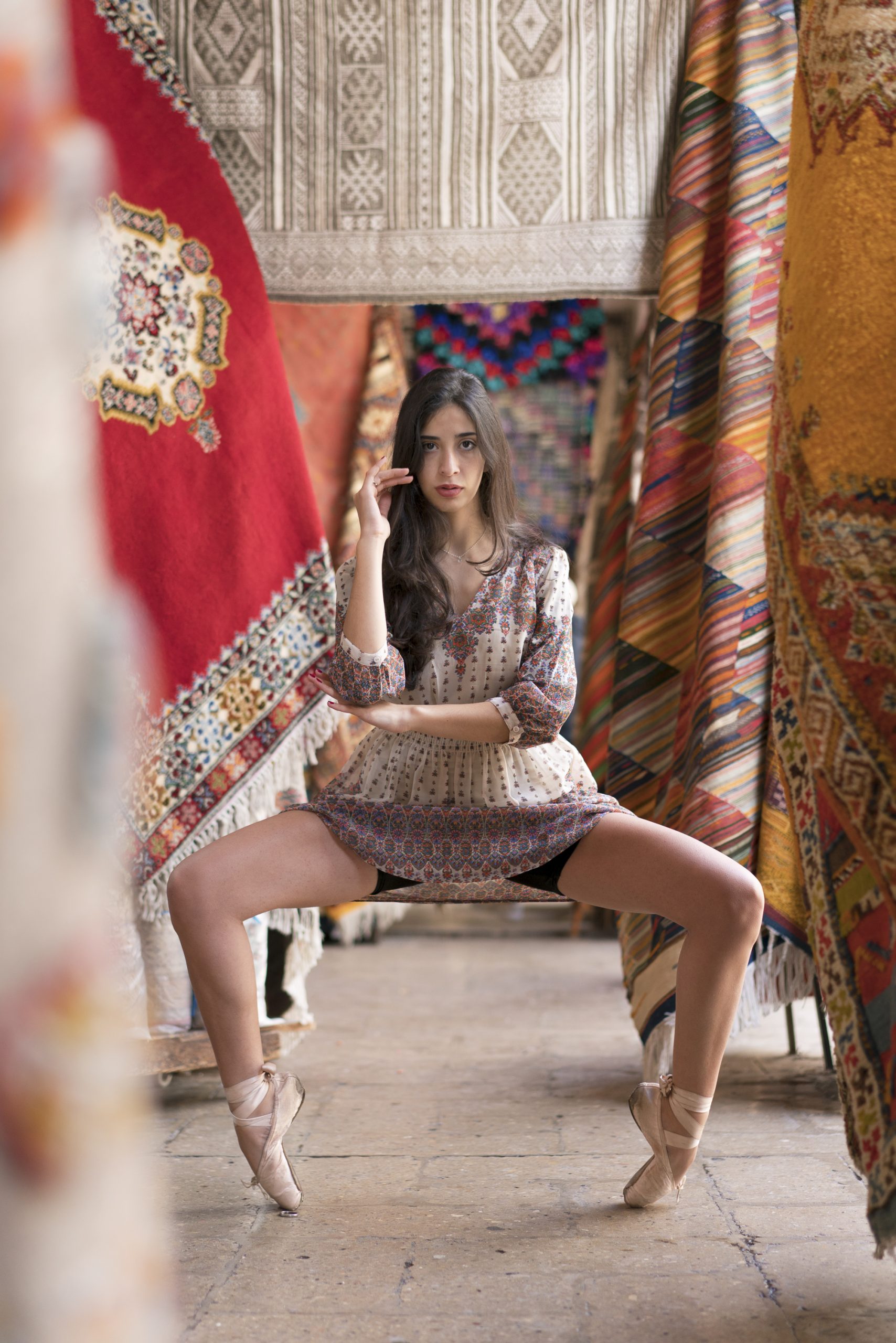
Alchali’s trick is different in a carpet market in Habous, a more traditional Casablanca neighbourhood. The depth of field is shallow, focusing on Sendby who is surrounded by carpets. The carpets are intricately patterned and so is her dress. She faces the camera squarely in a power pose, squatting with her legs wide open, almost fully perpendicular to her body. Her arms are in front of her, one held perpendicular to the other. This single frame contains several other frames: The ballerina is framed on the sides and from above by the carpets. Her open legs frame the market aisle beneath her. The arm held out horizontally at her midriff divides the picture into two vertical frames; the frame above is cool as can be but the frame below is where the wonder is. The ballerina is balanced on her toes again, her feet curved inward. The model and the camera are complementary. The boldness of the dancer does not diminish the candour of the photographer and the vulnerability of the presentation is unsentimental. At home on her toes, Sendby has as much control of her image. The visual conversation seems even, a dialogue.
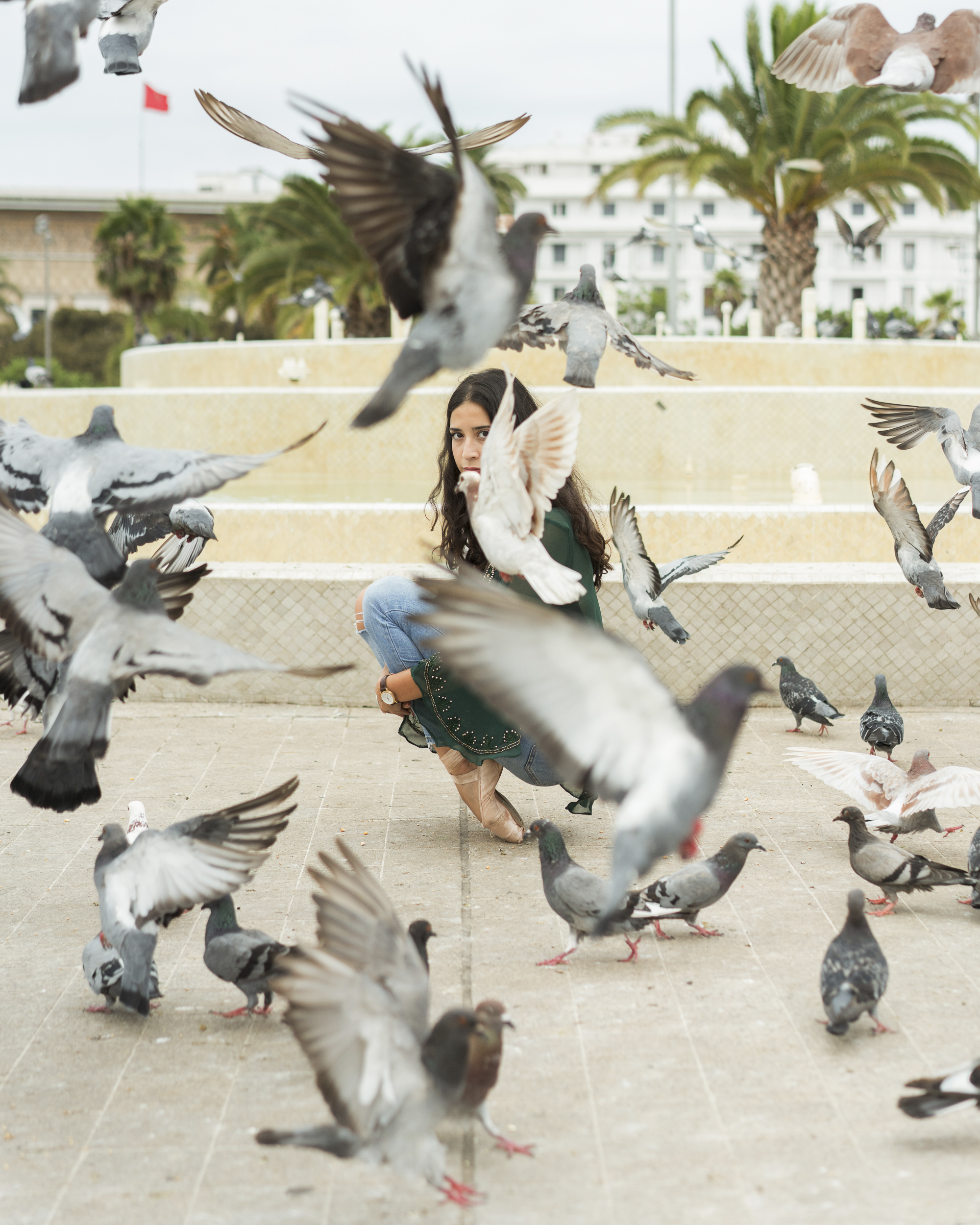
Perhaps there is a case to be made for ballet—and photography—as a medium for reclaiming the bodily integrity of women. After all, this is an art form that has allowed women the chance to master their bodies to an extent that is not available in other less physical, male-dominated arts where they are stereotyped, caricatured and treated like concepts rather than real people. Achalhi’s images—even when they are taken in the streets hugging landmarks, or on a major road like the Rue Nichakra Rahal—thoughtfully freeze out loiterers. The ballerina is always centre stage, holding her own, except when she is conferring with birds, a communion of wonders.
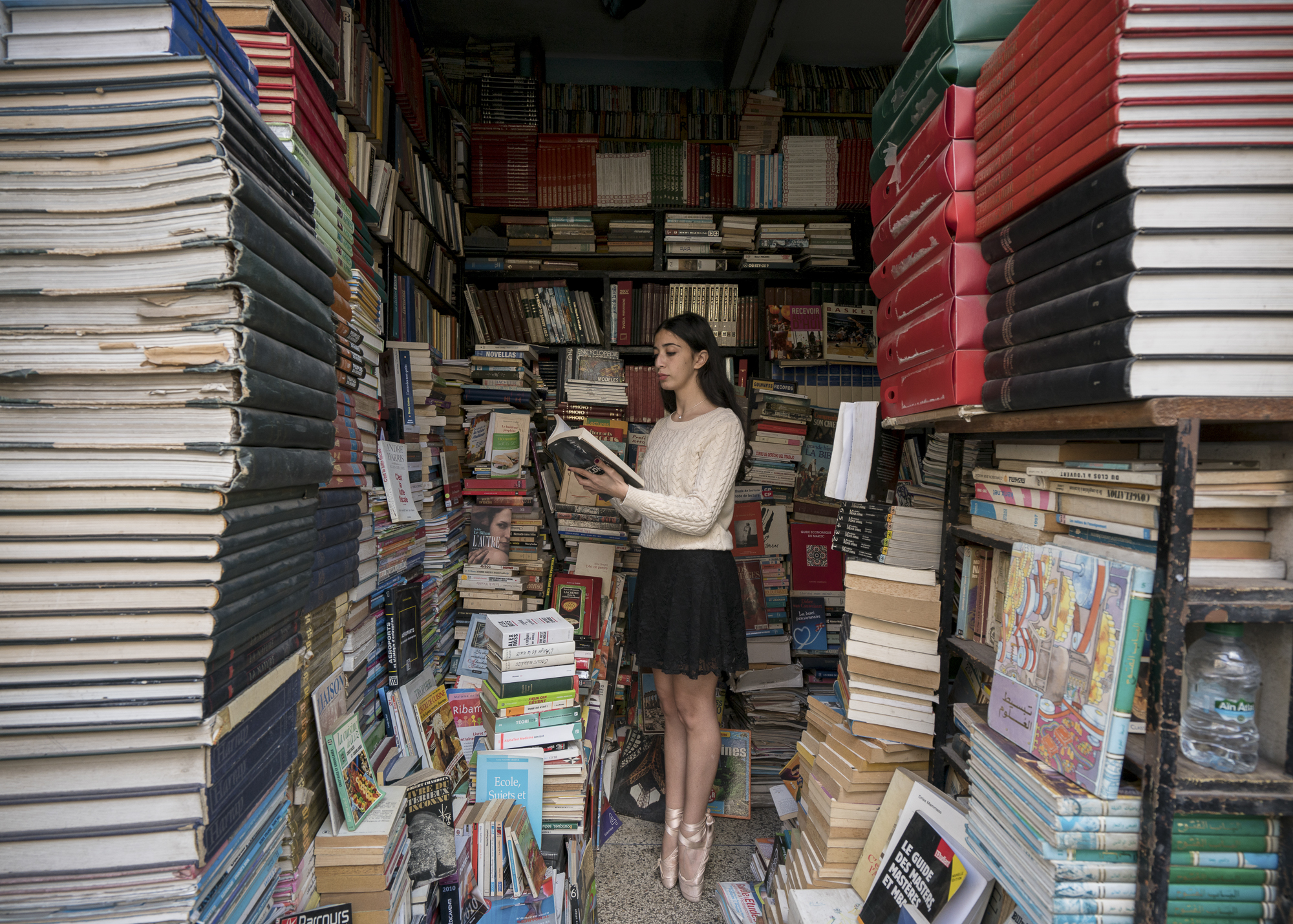
Yet, one image in Casarina, Part 1, breaks away from the compositional format: while the nine other pictures are oriented in portrait, it is in landscape; also it is shot, unlike the others, in an interior space. Sendby in the middle ground, simply standing en pointe in a white sweater and black skirt, attentive to a book. In the chastity of her stance, the book might as well be talking to her. Thousands of books and ledgers take up the space, leaving her with just enough standing room. They are colourful and sport expressive covers. This photo is about Achalhi before it is about ballet or the Ba Roudani Bookstore where it was shot. It is a photograph dictating its own form, forcing the photographer to admit to his creative sources, to pay homage. The art makes the artist makes the art.




